I remember the first time I heard the myth that “Revolvers are more reliable than semi-auto pistols” …
I wasn’t even a teenager and my father had taken the family out to West Virginia where we were attending an informal “pistol competition”. (It was basically just a row of steel pepper poppers and a table of bowling ball pins that you shot head-to-head against the other guy but to me I thought it was obviously the coolest place in the world.)
Anyways, one of the ‘old timers’ there was talking to my mom about self-defense guns–this must have been in the 90’s when concealed carry was first becoming popular.
The old timer told my mom “You know, revolvers are actually more reliable than semi-autos … because if you have a misfire … you just pull the trigger and the wheel rotates to the next round. All you have to do is keep pulling the trigger …”
To my young, impressionable brain — that made all the sense in the world.
And you still hear it today that “wheel guns” are more reliable than modern semi-auto pistols … but is it true?
As I’m about to show you, that’s not the case at all …
Where the myth of revolver reliability comes from …
Tom Givens recently explained to me where this myth comes from. This is why it’s so great to train with a guy like Tom who has “seen it all” and also knows the history behind these things:
“The old crap about revolvers being more reliable than autos arises from the ammunition that was available when autos first appeared in military and police service, circa 1900.
Ammunition of that day had unstable primers that deteriorated quickly when exposed to gun oils, solvent vapors, and just ordinary exposure to weather while carrying the loaded gun and ammo on the belt. The primers of that day contained mercuric salts, which gather moisture form the air and cause corrosion. These “corrosive primers” made cleaning the gun the same day it was fired and absolute necessity. If the gun was not cleaned immediately the mercuric salt deposits in the barrel would gather moisture and cause rust overnight.
Unfortunately, these mercuric salts in the primer gather moisture when ammunition is being worn on the belt and often failed to fire when needed. This is no longer an issue as these mercuric primers have not been in use in the US since World War II.
Modern primers contain lead styphnate, not mercuric compounds. Modern primers are far less susceptible to oils, solvents, and the weather. However, when auto pistols first became common the mercuric ammunition was all that was available and misfires were common. If a revolver misfires the user simply pulls the trigger again and a fresh round comes up for another try. If a cartridge in a semiauto pistol misfires the user must perform an immediate action drill to get the gun back in operation. With modern ammunition a properly maintained semiautomatic pistol is about as reliable as a machine can be.”
So there you have it …
In an age, OVER 100 years ago, when ammunition was less reliable — and the most common fight stopper was a bullet that did not fire (failure to fire) — the revolver was thought of as more reliable because all you had to do was pull the trigger again instead of tap, rack, bang with a semi-auto.
Now, with more reliable ammo — is the revolver still reliable?
No, and here’s why …
Reason #1: Five or Six chambers instead of one …
An auto pistol has one chamber attached to one barrel. A revolver has one barrel and 5 or 6 individual chambers that have to line up precisely with the barrel in order for it to fire. If due to wear and tear or whatever else, these chambers are off by even a thousandth of an inch, a bullet could shave off a forcing cone or misalign with the firing pin and you’ll get misfires.
In other words, revolvers require tighter tolerances by nature of their multiple chambers … and … tighter tolerances mean they are more failure prone by design.
Reason #2: More parts = More chances for something to go wrong
In addition to the 5 or 6 chambers that have to precisely line up with the barrel each and every trigger pull, the internals of the revolver are no laughing matter. If you crack it open and look inside, it’s like looking at the inside of a watch.

And like a watch, there are plenty of opportunities for these interacting parts to malfunction or get “out of time” causing failure. Compare that to a modern semi auto pistol like the Glock with only 34 component parts (the smaller number of parts reduces potential for technical problems because there are less chances for something to go wrong).
Reason #3: Most Revolver Failures to Fire are “Jams” Not “Malfunctions”
Let’s define our terms:
JAM – a serious stoppage that normally involves a broken part or something of that nature that would require tools to fix.
MALFUNCTION – some interruption of the firing cycle that can be remedied simply and/or quickly.
When the primary reason for a failure to fire, 100 years ago, was bad ammo — the revolver was reliable because you just had to pull the trigger again.
Now days, ammunition is more reliable so let’s look at what else could go wrong with a revolver. These are ALL reasons that a revolver could fail to fire:
*** Excessive fouling under the extractor star can lock up a cylinder (it won’t turn, won’t rotate to the next round).
*** Recoil can cause bullets to wiggle their way out of the shell casing which can also prevent the cylinder from rotating.
*** Cylinder won’t open for a number of reasons (you can’t reload)
*** The ejector rod can work itself loose and cylinder won’t turn.
*** A grain of gun powder can work itself under the extractor star and the cylinder won’t turn
*** Ejector rod is bent (because it was hit wrong during a reload under stress) and the cylinder won’t turn
*** High primer in one of the 5 or 6 cartridges keeps cylinder from turning
*** During reloading you can get incomplete extraction and cases stuck under the extractor.
*** Taurus or S&W “internal lock” has spontaneously engaged and the gun won’t fire
*** Strain screw in front strap of grip can loosen over time, if it backs out enough, the firing pin strike will be too light and won’t ignite primers — failure to fire.
And almost ALL of these are very, very hard to fix in a fight. In fact, it’s practically impossible. They are true “jams” that require tools to fix.
So are there any benefits to a revolver?
There is one apparent advantage to the revolver I can think of at this time …
If you are involved in a hands on fight and you put the barrel of the revolver up against a person — as in contact-to-contact pushing the barrel into their body — then you can shoot the revolver multiple times from this contact position. In most (all?) semi-auto pistols — pushing into the barrel like this will put the gun out of battery and it won’t fire.
The Revolver VS The 1911 Semi-Auto Pistol …
It’s important to remember that the revolver is old, old, OLD technology …
The 1911 semi-auto pistol is itself a design from over 100 years ago, making it obsolete. The revolver design is even older!
The truth is that there is a reason the military switched long ago to autos … and that it has been decades since police have been issued revolvers … because technology has given us better tools.
Look at it this way …

The Ford Model T — the first car — was first built around 1908 and NOBODY would argue that a model T in any way out performs even the least reliable of today’sautomobiles. Yet, this is around the same time that the 1911 semi auto REPLACED the revolver for military service.
The revolver is a victim of the technology of its time and is in no way more reliable than modern semi auto pistols.
Hey, if you like your “wheel guns” you can keep em’! Just don’t pretend they’re on par with guns that are the pinnacle of modern technology today 🙂


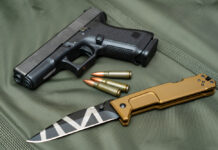




![Are Compensators Worth It? [Video]](https://preparedgunowners.com/wp-content/uploads/2025/07/Depositphotos_815431992_S-218x150.jpg)


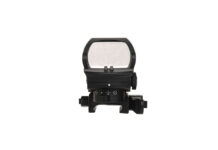
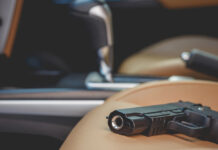
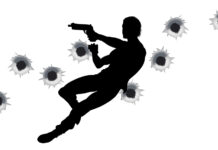

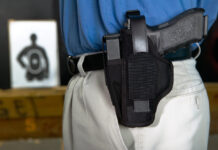
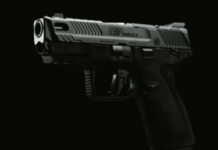
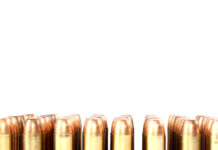
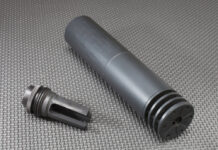
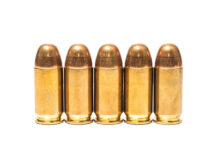

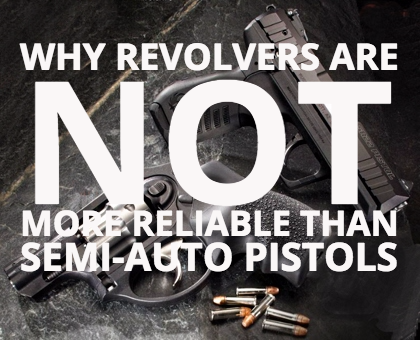




![Did Kyle Rittenhouse Just Get His Own Video Game? Yes, Sort Of [Video]](https://preparedgunowners.com/wp-content/uploads/2022/05/Depositphotos_27618619_S-100x70.jpg)





![Optic Ready vs Milled slides? [Video]](https://preparedgunowners.com/wp-content/uploads/2024/02/image-3-100x70.png)
![[Checklist] What Gear You Need To Take Pistol, Rifle & Shotgun Training Courses [Video]](https://preparedgunowners.com/wp-content/uploads/2023/07/Depositphotos_275087632_L-100x70.jpg)
![What is in Carter’s 2023 EDC? [Video]](https://preparedgunowners.com/wp-content/uploads/2023/07/Depositphotos_146856137_L-100x70.jpg)
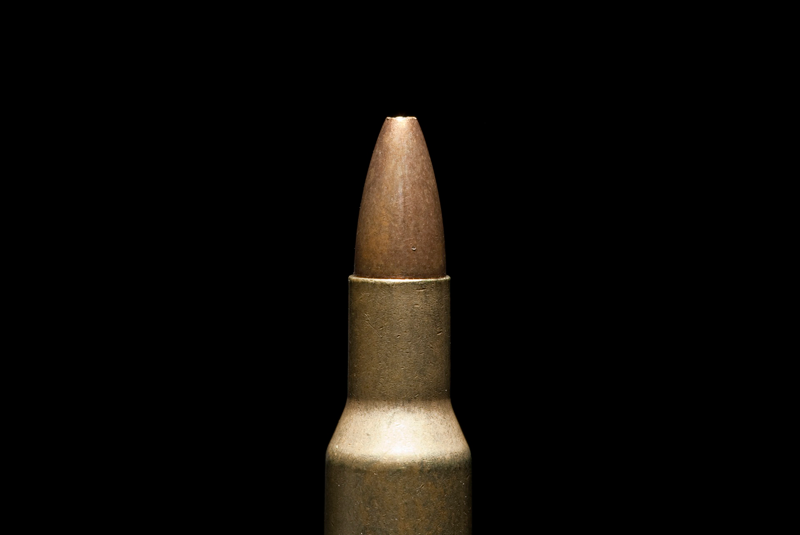
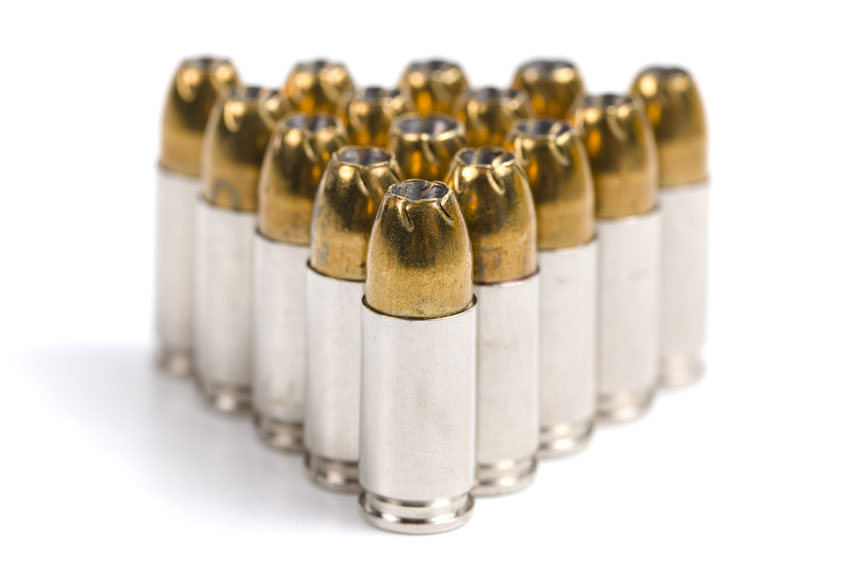
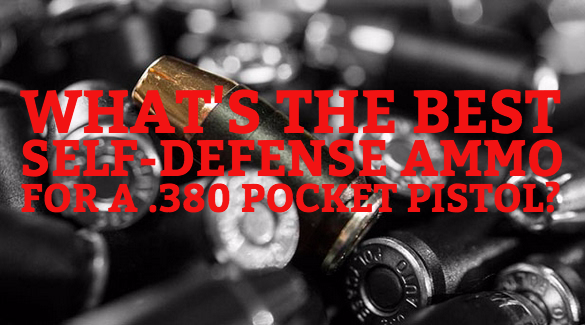
The first time I ever shot a j frame .33 I hit the Bulls eye of the target with the first shot then the cylinder locked up so tight we had to use a rubber mallet to beat it open.Took about half an hour.Plus p loads somehow lockedit up and it became a club…Two is one and one is none,never forget that.
Yup that’s why the “New York Reload” (aka carrying a second revolver) was so popular back when cops used wheel guns exclusively …
You need to read Cirillo’s book about the New York Anti Robbery Unit. The New York Reload was started BEFORE autos were authorized and speed loaders were in their early days. It was a QUICK way to get another six rounds into play, was not about reliability. And yes, he was at FLETC when I was there, was a legend.
A revolver in a pocket is easy to use as you do NOT have to worry about the slide not having a chance to fully recoil and feed the next round. I have never had a revolver lock up due to “lint”.
This is an Old Argument. Use what you are comfortable with. If a primer does not discharge on a wheel gun, I can pull the trigger and rotate the cylinder to a new round. Cannot do that on an Auto. I like that.
Fifteen Years as a Firearms Instructor, there is no reason to beat this dead horse.
I don’t have a website, but agree with this article. My Granddad was born in 1877 and fought as an artillery captain. My Dad, was born in 1905 and had a family to support and made training films during WWII as well as being a civilian block-warden and Ham radio operator during WWII. I’m a combat wounded ‘Nam vet trained with all light weapons and recoilless (enemy’s and ours), then used most of them in-country. After ‘Nam, I was assigned to test light weapons for a defense contractor and remain an aficionado and hand-loader. As an avid owner, and strictly from the things I’ve read, my Granddads stories and personal experience, the primary reason our military had to switch from the .38 Special 6″ barreled wheel-gun after the Spanish American War was pure and simple: “stopping power”. They eventually ended up with John Browning’s designed semi-auto .45 calibered pistol which was released to the US military in 1911 after Colt got the contract to build it. Basically, this decision came down to the still argued bigger/heavier dirt-clod theory vs. the light, faster smaller dirt-clod theory.
As a M-79 Grenadier and later a M-60 Machine Gun Team Leader, I carried Colt’s .45. In the dark, if the .45 auto jams, simply turn it upside-down, rack the slide and gravity will allow the chambered round to fall out, release and hopefully there’s one more round left in the clip to feed. The pistol did jam one night during an enemy attack on our NDP (Nighttime Defensive Perimeter) when a NVA sapper followed one of our returning ambush patrols back through us. We were reloading the Gun when I noticed him and jumped in front as he hit me and we both fell backwards. I emptied 7 rounds into him as we fell, but the weapon jammed on the 8th (there was already one in the chamber) because the slide hit my stomach.
I’ve owned several revolvers. My first was a Ruger .22LR cal. with the interchangeable .22Mag cylinder. It was a single action pistol (cowboy styled) and much fun to shoot. One day I decided to totally disassemble it down to the last spring and screw. Once apart, I couldn’t believe how many parts were before me. I cleaned and lubed appropriately and began reassembly. A very small coil spring popped from my finger onto a brown shag carpet and knew I’d never find it without a metal detector.
My wife found it when vacuuming. The point of this story illustrates that revolvers may look simple on the outside, but they have many parts and aren’t so simple on the inside.
I’ve read Cirillo’s book of how he and his partner would hand-load for their .44 cal. revolvers and his infamous cross-cut pattern was burned into flat-nosed lead wadcutters and divide into 4 separate pieces after impact and do more damage. I don’t know if today’s cops can reload their own ammo because in a court of law, DA’s do not look favorably upon reloading. Usually factory loads are easier to justify because otherwise, it makes a reloader intentionally meant to custom-load with full intent to kill, not simply injure or stop an assailant..
I’ve reloaded a lot .45ACP and found that it usually comes down to the point of ignition, the primer. Some re-loaders use expensive progressive machines or the less expensive one step-at-a-time machines. I focus on the primer’s seating depth ,001-.002 of an inch. If you place the case on a flat top of anything and it rocks back and forth a little, this obviously means the primer can cause a stoppage in a revolver. In a semi-auto or full-auto weapon, it may ignite prematurely as the bolt’s firing-pin hits it before the bolt locks up causing a “KB” (KABOOM), aka a “slam-fire”. Conversely, if the primer is sunk too deeply it can crush the primer’s anvil causing a misfire or a slow burn which is one of the reasons it’s advisable to wait 10 seconds, keeping the barrel pointed in a safe direction before attempting to unlock the bolt.
I go with what works for you. Everyone’s hands, fingers, size/stature, state of mind, physical abilities and self-defensive situations are different. New metal allows and especially springs and powders have come a long way. I also train those who want to learn. My first lesson is safety…2nd protect your hearing/eyes and please never sweep the muzzle end at anything or anyone you don’t want to injure or kill, always treat a firearm as if it’s loaded whether you know it or not and “practice makes perfect”…most of the time.
No offense, but I was 4 years USMC and 22 Army. As I recall, we didn’t use the word “clip” for magazine, and we (as best I remember) called that weapon a “1911,” not a “45.” Just sayin’…
I have had a primer partially back out of the shell casing and stop a revolver from being able to have the cylinder rotate ! Just once but it happened !
It was a long long time ago and I think it may have been a 357 magnum shell and the large kick caused it ?
T Lee Buyea, Miami, Fl.
Could be, but definitely proves the point.
I like them all.
I have 2 carry guns (depending on dress, what I will be doing that day, etc) One is a S&W lady Smith in .357, and the other is a series 90 Colt 1911 – .45 cal 3″. While the Colt is a fine weapon, supplying 8 shots (opposed to 7 in other model 1911’s and 5 in the little S&W), I’ve had that little Lady Smith for many years, and not once has she stove piped on me LOL – or misfired even once. Even though I have shot the 1911 quite a bit since I got it last year, with little jamming issues at first and none since I figured it out (It doesn’t like anything but ball ammo), I still have this tiny “nag” about it. When I am out plinking, I practice jam clearing with it, just because.
If you decide to carry a firearm, be aware that routine maintianence is an absolute must. If you don’t maintain your car or any mechanical device it will fail. My own self I prefer a 357 revolver with hard cast semi wad cutters. None of relying on hollow points to expand. Hit what you aim at and a thru and thru causes massive blood loss, the flat point of the semi wad cutter causes maive shock. This has always worked in the past, so what would cause it to stop working now?
There’s a lot of logic to that statement. If one doesn’t hit the central nervous system, we are then relying on them bleeding out. An exit wound doesn’t just multiply the number of holes by two, it’s usually a much more ragged hole more prone to bleeding, tissue damage, and let’s face it, physical and mental shock, because most of the nerve endings we have are on the outside of the body. From a loss of kinetic energy perspective, anyone who has seen the temporary wound cavity in a slow motion shot of ballistic gelatin can see with their own eyes, most of that energy is dumped near the entry wound. The only downside of over penetration is hitting a bystander. It’s conventional wisdom over penetration is bad. However, which is more likely, a bystander being hit by the good guy’s over penetration or a gun fight that lasts long enough to throw multiple rounds downrange? I think the over penetration crowd forget the fact that the bad guy who isn’t checking his backstop is thrown lead downrange while he slowly bleeds out. To everyone but a department lawyer, this is a big problem. Inasmuch as even 9mm can over penetrate, I have to agree with you that going for double penetration and ending the fight quicker is the lesser of two evils.
Illustration:
Scenario A: Good guy and bad guy fire 10 rounds at each other, for a total of 20 rounds during the 30
seconds it take the bad guy to die.
Scenario B: Good guy fires three rounds of .454 Casull which WILL over penetrate, and bad guy fires 5 rounds of 9mm during the 15 seconds it takes him to bleed out.
Results:
Scenario A results in 10 rounds of 9mm being expended downrange by someone who isn’t checking his backstop, and ten rounds of 9mm being expended by someone who is, for a total of 20 shots.
Scenario B results in three rounds of deep penetration with a backstop check, and 5 rounds with no backstop check.
Conclusion: Draw your own conclusions, but I’d rather be a bystander in Scenario B.
I only have 1 revolver. A .22 cal. It has NEVER had a FTF. On the other hand my 1911 did during the first 200 round kind of “break in period”. I LOVE that 1911, however; I also love that little .22 revolver so I think in reality it`s about 6 to 1, a half dozen to the other. As in political parties along with Republicans there are those (nutcases in my opinion) that swear by being Democrat. Likewise, there are probably just as many revolver lovers as semi-auto lovers. Personally I prefer the semi auto myself. Admittedly, an interesting article. Unlike the political system BOTH the semi-auto and revolver are used for the exact same reason.
There are many, many other scenarios where revolvers are less reliable than semi-auto firearms. Firing from a concealed position (pocket or purse for instance). Doing so might cause fabric, pocket lint or other substances to jam the wheel or hammer mechanism. Simply carrying and drawing from such a casual carry position could cause problems, as most revolvers (but not all, of course) have external hammers which can snag. Granted, some auto gums have the same problem, but generally to a lesser degree. Autos tend to be smoother, flatter and easier to draw than revolvers of equivalent caliber. Auto’s barrels are generally lower in the hand than in revolvers. This reduces perceived recoil and aids in second-shot accuracy. Reloads and/or partial reloads for autos are much quicker than in revolvers. According to police statistics, most gun-fights are over in less than three shots, but I’d prefer a full-load in my weapon if timing would allow.
Yeah, judging by my previous comments, you could guess that I’m sold on autos, but this is a controversy that will go on for quite some time. Most gun owners are generally either die-hard revolver fans or hard-bitten auto aficionados and never the twain shall meet. There is a comparable gulf in the rifle community between bolt-action and semi-auto fans. Ditto for shotgun use (semi-auto, pump, break-open). “Ya pays yer money and ya takes yer chances” as the old gamblers used to say.
The big question often asked by newbies is: “What is the best gun to use?” The ultimate answer is: “The one that you have with you.” That is, the one that you can comfortably and legally carry as opposed to leave on a shelf, back at home.
Yup and all those things are for another article, but you’re right. I just wanted to focus on inherent mechanical reliability in this article.
You must be a very young man. I have been shooting for for about 60 years and can tell you that just because something is modern that does not make it better. Most of your explanations don’t hold water. Poor ammo or reloads, poor gun maintenance are signs of people who shouldn’t own guns in the first place. How is your vehicle going to operate without clean oil and proper care.I think you need to grow up.
LOL …
Yup, I’m quite a young man … but … I’m growing older every day 🙂
These are verifiable facts and it’s the reason nobody in the police/military uses revolvers for a primary sidearm anymore. Again, if you like your revolvers you can keep em’ but facts is facts.
Anytime an article quotes someone who “has seen it all” beware. No one has seen it all. I have been a full time deputy sheriff since 1973 and I haven’t “seen it all”. That said I still carry a 4″ S&W Model 66 that I was issued in 1976. I work for a sheriff’s office where there are about 4 of us carrying .357 mag wheel guns. I am also qualified to carry the 1911 Colt but I prefer the ballistics of the .357 for my working environment. Opinions are like a_ _ holes. Every one has one but plain fact of the matter in my humble opinion is that the revolver is overall more reliable than the semi-auto.
Most gun owners and CCWers are not “gunnies.” Once the gun is selected, broken in and practiced with, it is just a tool for a purpose.
Most of us most of all want a gun that goes “bang!” without fail every time the trigger is pulled and at no other time. Accuracy is a distant second in importance.
If a gun misfires for any reason other than truly bad ammo, I want it fixed. If it can’t be fixed it is a piece of scrap metal as far as I am concerned. Stovepipes, failures to eject, failures to feed, broken springs, any broken parts, it is a piece of trash.
I once had an AMT “Backup” .380/9mm short. It failed to fire – shallow primer dents – stovepipes. I installed a stronger, longer mainspring and never had another failure of any kind. Stolen from a motel room in Pensacola, Fla.
There are so many reasons to like autos… Bigger magazines, faster reloads, easier to conceal… But I’m a revolver man every time. I’ve read Elmer Keith and Ed McGovern and my eyes have been opened to what can be done with a handgun. I’ve spent the past few years teaching myself to shoot fast, accurate double action, and I’m good enough for my own standards and probably better than most casual criminals no matter what they’re carrying. In the end if it’s just practicality, the auto may win. As a matter of style it’s hard to beat a good revolver. I do absolutely think revolvers are the right choice for teaching. Not many steps, and very predictable. The Lady Smith!? I’d love one myself. Great little guns. Just can’t bring myself to carry a gun that says that on it though. Like wearing a pink shirt. 🙂
LOL I hear ya.
They look neat for sure.
I see problems can occur in both firearms, although I have never had a revolver misfire, I have had quite a few hang ups with semi auto’s. I love both. Whats there not to love about a firearm. Some of the problems can be attributed to owner negligence with out a doubt. Damn fine article.
Thanks. This was just all news to me because I too thought “yeah that sounds right, revolvers must be more reliable” but it turns out theres a LOT that can go wrong with a wheel gun that a tap rack bang wont fix …
I prefer semi-autos, but I keep a revolver by the bed-side at night. Here’s why.
If someone kicks in the front door, you have MAYBE 15 seconds to; wake up, realize what is going on, reach for your weapon, engage the action, aim and shoot.
If I have to add: rack the slide & remove the safety to that sequence, I am surely out-of-time. Not to mention racking a round takes 2 hands to accomplish..
I like that I can reach for the revolver with one hand, cock the trigger with one thumb, and I’m ready-to-defend. In the AM, I just place the revolver back in the safe. No need to un-chamber the round, as you would want to do with a semi, that had been locked-and-loaded – for a similar grab-and-go response.
If I’m sleeping, I sleep better next to a revolver…
I would not advise anyone to unload their “home defense” handgun at night. Even a semi auto.
Example, my glock comes off my waist and into my quick acccess safe, stays locked and loaded the entire time. And of course no manual safety on that …
Most gun owners and CCWers are not “gunnies.” Once the gun is selected, broken in and practiced with, it is just a tool for a purpose.
Most of us most of all want a gun that goes “bang!” without fail every time the trigger is pulled and at no other time. Accuracy is a distant second in importance.
If a gun misfires for any reason other than truly bad ammo, I want it fixed. If it can’t be fixed it is a piece of scrap metal as far as I am concerned. Stovepipes, failures to eject, failures to feed, broken springs, any broken parts, it is a piece of trash.
I once had an AMT “Backup” .380/9mm short. It failed to fire – shallow primer dents – stovepipes. I installed a stronger, longer mainspring and never had another failure of any kind. Stolen from a motel room in Pensacola, Fla.
You need a stronger door.
At least 1″ deadbolt extension.
Long screws that go through the door stile (2×4 down the edge of the door to hold the bolt mechanism in the edge of the door.
Long screws that hold the strike plate in the door jamb. Screws should go through the door frame into the wall studs framing the door opening.
On each hinge leaf, at least one long screw through the door stile and through the jamb into the studs.
If your landlord does not object, a “Segalock®” type surface mount lock is much stronger than a mortise lock because it removes very little wood – only a 1-1/4″ hole for the key cylinder. The knuckles are far stronger than an ordinary deadbolt. Even a cheap pot metal “Segalock” style lock is stronger than a very good residential grade mortise deadbolt. A heavy brass Segalock is best. The knuckle strike should have two long screws through the door frame into the studs and two long screws almost all the way through the door frame toward the outside. A cylinder guard plate on the outside of the door finishes the job. If lock pickers are operating in your area, virtually unpickable cylinders such as Medeco® and Abloy® will defeat them.
Make the badguys have to work hard and mainly make lots of noise to wake you up and shake off your nighttime beers. Hopefully the cylinder guard plate on the door will send them to your neighbors.
I disagree with your argument. It doesn’t match reality. I see far more jams at the range with semi-auto stove pipe jams than jams I see with revolvers. In fact, I’ve never seen a jam with a revolver.
Could it be because you never see revolvers at your range because all the smart people stopped using them 100 years ago?
(tongue planted firmly in cheek … but still a valid point)
I’m with the comments above. I shoot both wheels and semis and have never had a jam on a wheel gun, unlike my autos. If you have a worn out gun, it’s time to make it a wall hanger. I’ve got all sorts of wheel guns, a majority being Smith and Wesson in 44mag. These have never ever jammed and have thousands of rounds through them…so I don’t get where you coming from. I collect 1911’s because of their history and the look…no Glock or other plastic gun have that! But when I shoot at some of these steel plate challenges I really notice the M&P’s with their stove piping. I wouldn’t use my 1911officers Model for CC, it jams if your not locked in with your wrists. I usually shoot my Springfield Loaded 1911 with 10 round mags, just don’t try to use cheap ammo because a stove pipe is always around the corner.
I’m a hunter too, usually with a bow… But I carry my S&W 44mag mountain gun for bears (fire a 44mag with a bear around, they don’t run towards you) I wouldn’t count on any semi auto for that….but that’s just me…been doing it for almost 40 some odd years.
Most of the “problems” with revolvers cited in the article are really problems with the shooter, not the machine. If you damage the gun by dropping it or flipping the cylinder closed, it’s your fault, not the platform. It’s also pretty hypocritical to say how much more reliable semis are today because the ammo is better, and then claim that dirty ammo working its way behind your extractor is an inherent drawback of revolvers. Bullets don’t jump crimp if you have tested a good factory ammo with a conservative load. They jump crimp and split cases when you act like an ass, and that applies equally well to semis, play with fire and get burned. If you improperly clean your gun and use dirty ammo, take a look in the mirror for the culprit. As far as extractor rods working loose or the timing being off in your revolver, these things happen over time, so shame on you if you carry a gun with these issues. The problem with semis isn’t that they are not reliable, they are RELIABLE ENOUGH, but the things that go wrong with them hit like a bolt out of a blue, there’s no warning. I’ve had issues with my Glocks and Sigs, AND my revolvers, but I’ve never had a wheel gun fail to operate like when my Glock 27’s recoil spring rod broke. It’s not a good feeling. The bottom line is unless you want to go with the .460 Roland, you can’t get big bore through and through performance with a semi. There’s lots of advantages to a semi auto, but it’s apples and oranges when comparing with the revolver. I think the MOST IMPORTANT DIFFERENCE between the two weapons types is I’M MORE RELIABLE WITH A REVOLVER. Under stress, the human body does stupid things with tunnel vision and loss of dexterity. I can’t load a bullet backwards in a revolver, forget to insert a mag after I top off, fail to properly seat a mag, short stroke the slide, ride the slide release, drop the mag release by accident, snag the slide and cause it to malfunction, or limp wrist it. You can talk about the mechanical malfunctions all you want, but the human ones are the biggest advantages to the revolvers. If things go poorly, you are not completely dependent upon your drills.
It doesn’t matter what you have. It’s better to have it and not need it than need it and not have it.
It doesn’t matter what you have. It’s better to have it and not need it than need it and not have it.
Yeah, a Jennings with you is better than a. 50 Desert Eagle back home in the safe.
I’m with the rest of the wheel gun guys, I shoot both. I collect 1911’s, nothing else even holds a candle look wise. I shoot a Springfield Loaded 1911 with 10 round mags at the steel plate challenges and see semis jamming and stove piping all the time. My Colt Officers model hates anything but the most expensive ammo and it’s only because you really have to watch your wrists when you shoot.
My wheel guns have never jammed EVER!! I have 7 S&W 44mags in various configurations (just like the style and caliber) and 12 others …Rueger Red Hawk and Black Hawks in 44 mag, Colt Python, Ruegers in 22 mag and longs, Taurus Raging Bulls and then a few Freedom Arms 454 Casuals. Hand loads, factory loads (cheap and expensive). Not one jam…
Can’t say the same for any of my Colts, Kimbers or Springfields..
This is bunk; a revolver kept clean and in good condition rarely misfires; a pistol has multiple opportunities to jam, and frequently does. My new Spanish made 9mm pistol frequently jammed, to the point I finally got rid of it.
So …
“My new Spanish made 9mm pistol frequently jammed, to the point I finally got rid of it.”
That sounds like your problem. Buy a real handgun from a reputable manufacturer that has been proven by millions of police/military operators worldwide … Sig, Beretta, Glock, SW M&P, HK, etc
This is bunk; a clean & well maintained revolver rarely misfires; pistols have a reputation of constant jamming; my new 9mm Spanish made 9MM jammed so often I finally got rid of it and bought a Rossi stainless .357, which solved my problem 100%.
Your “reason #1” regarding 5 or 6 cylinders not lining up due to wear does not hold water. Compare apples to apples. A worn out semi-auto is no better than a worn out revolver. “Reason #2 is likewise flawed in that you purposefully picked one of the most complex revolver designs ever to display. There are significantly fewer parts in a S&W revolver. “Reason # 3 compares a “broken” revolver to a functioning semi-auto. How about comparing a functioning revolver with a semi-auto with a broken main spring. Most everything you listed were failures due to misuse or lack of proper assembly and maintenance or poorly reloaded ammo.
You do not have facts, you only have opinions listed.
My experience is perhaps on the order of a million rounds through revolvers in IPSC, IDPA, ICORE, and steel events. I can count my failures to fire on the fingers of one hand. However in the few hundred thousands of rounds I fired through semi-autos I estimate having over 50 malfunctions. I have also acted as Range Officer and seen countless semi-autos break in competition. I can only recall two times a revolver broke to the point the stage could not be completed. One was a backed out yoke screw letting the cylinder and yoke to slide off the gun. Proper cleaning and assembly with Loctite prevents this as should be done with ALL gun screws. The other was a broken hammer nose on my own gun. I have seen several 1911s break firing pins.
If you compare revolver versus semi-auto in typical self defense, and that is relatively clean (holster dust) and maintained guns and factory ammo, the reliability of the revolver is light years over semi-auto. The problems you list from things like backed out primers and unburnt powder under the extractor happen as the result of worn out brass and improper reloaded ammo. Quality factory defense ammo does not have loose primer pockets and the powder residue is negligible.
A major weakness of the semi-auto is shooting one out of position can lead to a short cycle and failure to feed, or worse, the dreaded double feed. In that scenario the shot would likely be taken because the threat is so close the gun could not be brought up. There would be no time to clear a malfunction of any sort. It is a game over malfunction. A revolver cares little if the shooters wrist is bent or limp. Pull the trigger and it goes off each time.
Semi-auto pundits go on and on about how many hundreds of rounds they put through a new gun/ammo combination before they will trust one to carry for defense. With a stock revolver it is just a matter of running target ammo through one to prove function and practice, then verify the sights with chosen defense ammo. We all know Winchester Silvertips and a S&W will do the job 99.9999% of the time. Just how many semi-autos can be counted on to reliably feed most any hollow point. The 1911 in particular has employed thousands of gunsmiths the art of reshaping feed ramps and mag lips to get them to feed. I have seen and owned numerous Glocks, perhaps some of the most reliable semi-autos, that were picky about ammo.
The choice of semi-auto over revolver is much more simple. It is capacity over simplicity in operation and reliability. Both types require proper maintenance and ammunition. Yes a revolver is fatter at the cylinder. A slab sided semi-auto is easier to conceal. But none of that means anything if the gun comes out of the night stand. And you are behind the times. S&W has made 7 & 8 shot revolvers for many years now.
Next time, how about a fair comparison and list all the things that can go wrong with both types, instead of a one sided diatribe? Yes you are obviously a young man. Age will hopefully open your mind and experience will temper your opinions.
Avoid used guns with boogered screw slots. If someone used a carpenter’s screwdriver on the gun, expect worse abuse inside: messed up sears, bent pieces. Only real gun screwdriver blades like a Chapman® set contains should ever touch a gun.
I know that you gunnies already know these things. But others read these websites that are not gunwise.
Nothing better than an Ithaca Auto & Burglar in 20 ga. $5 transfer tax and the cost of setting up the trust to own it on your behalf.
Just thought I’d throw that in just for fun.
Actually Kerry, YOU are wrong on your statements about reason #2. The revolver shown is a Colt (or copy) and has 56 parts versus say a S&W Model 19 which has 74 parts in it (and the other S&Ws have similar part counts) versus the Glock’s 36-ish count. So, you’re wrong twice, in that the shown model has MORE parts than an S&W (NOT TRUE) and that it is a more complicated design than S&W (which it isn’t). That sort of goes to the credibility of anything else you said being of any value. As far as your logic about it not being “apples to apples” on the critique of the #1 reason, it is simply wrong, there is a comparison and it is based EXACTLY ON 5/6 REVOLVING (yes they make 7 & 8) chambers versus a fixed one, THAT IS THE POINT, hence the debate. Anything that has more parts is practically, mathematically and probabilistically MORE likely to fail on an “action for action” basis (i.e, shot for shot, or as a diesel is more dependable and durable than a gasoline engine). NOW that is a fact, check with a mechanical engineer. As far as reason #3, perhaps it could have been explained differently but the fact is that the life span of a semiautomatic handgun is measured in tens of thousands of rounds, it carries more ammo, is more durable and as the writer stated a malfunction is generally able to be remediated by the user and fairly quickly. Revolvers usually need a rebuild at the 15K round mark (wouldn’t want to carry worn out revolver) assuming of course that you shoot full power ammo all the time ( train the way you fight ;-} ). Drop a military grade handgun in silty, sandy mud and drop a revolver in same said mud in a bucket and shuffle them around a while, and I’ll use my 24 oz, $600, 15 round G19 and you can use your $1100, 37.8oz, 8 round M627 (which I’m sure isn’t anyone’s carry gun but you use it to justify part of your argument) and we fight it out, right out of the bucket! Yeah, there’s not much mud in a night stand but reality is always harsher than that. Of course since the magic one shot stop is thrown in there, then with a chambered round in either gun your argument is moot from a logical standpoint, yet again. Though even you should be able to make that one shot stop with even a semiautomatic. I’m sure your M627would work just as well, assuming you didn’t wee yourself and slam off all 8 rounds in a panic, since you’re such an experienced shooter and all. A high quality revolver and a high quality semiautomatic pistol will both shoot and function, reliably and accurately with quality ammo right out of the box, period. It’s almost as if you guys are stuck in 1970. BUT, the auto will function longer and more reliably under less than ideal conditions way longer than a revolver will and be easier to maintain. NOW, shooting off a bench or “target shooting” with OCD maintenance every session and checking every screw and detail cleaning your revolver, sure it MIGHT be more reliable, but if you did that with your semiauto, it will function just as well or better. There is a reason the military uses semiautomatic and automatic firearms, the author is correct and is also right. When a revolver is AFU, it is AFU and becomes a rock. As a AD NCO for over a decade (Vietnam vet) and nearly 3 decades in the reserves (retired senior NCO, 72-10) as a combat engineer (multiple tours), current firearms instructor and RO/RSO 27 years, state carry instructor for 21 years and all around gun nerd I can absolutely say I have seen a lot of it, and would never say I have seen it all (and hold all in great suspicion that say they have), BUT I know what I know. This will never change anyone’s mind, hard headed though they be. Talk to a police armorer that worked on revolvers and automatics and most of them would agree that autos are better guns for carry and service weapons. Not all, but most will say that, though I have yet to meet one that said they preferred revolvers for other than aesthetic and nostalgic reasons, not reliability. This same argument plays over for lever action (or bolt action, whatever) versus semiauto rifles (really…)
9mm vs 40 vs 45, polymer vs steel etc. blah blah blah. Time and progress march on. I have yet to have a military service weapon, rifle or pistol, jam except for one, a bolt action 03A3 Springfield (service rifle competition) with a broken firing pin. Though in full disclosure I did have an M1 Garand break a firing pin while hunting. The only handgun that had a complete stoppage (versus malfunction) was a personal S&W M27 (well maintained) revolver on a state certification course and a malfunction (stovepipe) with a 1911A1 that was cleared with the “hand sweep” technique in less than a second. So, that is two to two for bolt rifle and revolver (manual) versus semiautomatic rifle and pistol. BUT, the round count isn’t nearly the same, probably 1000 to 1 or more, semiautomatic to manually operated firearms. Plus the stovepipe easily cleared but the revolver had to go to the state trooper armorer to be safed (ie. un-AFU’ed). One of our Ranger teams got caught at a FOP on the top of a mountain in the stan and came under heavy fire and had to wait some hours for air cover and exfil. The squad fired between 1000 to 1200 rounds each in the firefight without a malfunction, all M4s and one M14, and that doesn’t count the SAW rounds. I have shot well over 3 million rounds that I can actually count (conservatively), shot NRA 3 Gun, IDPA, IPSC, Glock matches, service rifle, qualification, etc. and I just gave you all the factory/military ammo failures I’ve had… A clean, properly functioning, quality weapon, manual or automatic, will function, period. A semiautomatic is just as good as OR actually better than a revolver and has round count, that is a fact (and more durable). Yes, obviously, hit what you shoot at but you don’t dictate circumstances in any defensive situation, and all of a sudden a 5 shot revolver and 2-3 attackers becomes a serious tactical deficit. I have been shot at and I am here. I would rather have it and not need it, than vice versa…two is one and one is none. I have probably carried tons of ammo in my ruck that I didn’t need, but as I said, I am here. I carry a Tomcat, Kahr P9 or a G19 (no I’m not schizophrenic depends on circumstances) and have never had a malfunction with factory ammo and OEM magazines. Oh, FYI you should shoot a revolver with 500 rounds before you carry it too, just sayin’. The rules of gun fighting dictate what you should carry. One, bring A GUN to a gun fight. Two, bring the largest caliber gun you can shoot VERY well. Three, bring MORE AMMO than you think you need (and magazines). I have never met anyone that carried a revolver that also carried a spare speed loader (that wasn’t a cop)??? Why is that? (a speed strip isn’t a speed loader) And I don’t know of anyone that carries a 7 or 8 shot revolver as a carry weapon and almost inevitably it is a 5 shot… Me, nah, not unless it was the only gun I had, rule #1. I’m old now, so I don’t carry my 1911A1 anymore, my EDC is the G19 plus two mags, or the Tomcat plus two mags (shorts/summer) and the P9 is my BUG. The writer wrote a fairly cogent article and the points he makes are valid and I thought very (fairly) factual. If wheelguns float ur boat, then float my friend, but don’t try to justify it by saying you have the facts. You are just rationalizing your personal bias (yes I am too, so there!) for making a selection, which if justified by OBJECTIVE CRITERIA (as possible…) would put you at the disadvantage. The only fair fight is the one you win…and the only thing that ensures you a fair fight is preparation in training (practice), speed (semiauto) and logistics (magazines). When you rack the slide, it is all POINT AND CLICK, just like a mouse! Good day.
I partly agree: a Baretta rarely has problems; neither does my Bersa Thunder.
The Spelling Czar:
“Baretta” was a TV character.
“Beretta” is a very old Italian gunmaker.
Did I do that? Beretta was my first handgun — must of typed too fast?
I noticed this article was obviously meant to be one sided.. With all the mechanical issues that can go wrong with revolvers and no mention of issues with the Auto’s, but that is to be expected from a biased auto lover, truth is there’s not much truth in what you say.
All things Mechanical are subject to failure. When, how and why are all dependent on how well they are maintained… Autos are Equally susceptible to failure as Revolvers so why did t you mention all the things that can go wrong with the autos? Like stress cracks in the slider which can cause off tracking, debree caught down in clips eventually works its way up into the the gun as does debree on shells in pockets for the Revolver . And weak springs or spring breakage in the clip so the next round cannot engage itself not to mention what Spring failure elseware will do.
The fact is all it takes is 1 mishap in either gun and it can be your life or someone your trying to protect. As a former police officer I carried my S/w .357 with night sight and polished works, so dry firing was never an issue ..and for the record I’m not 100yrs old. This was in the ’80’s. And as another reader has mentioned I have never had any jams, or mishaps of any kind and outshot many others with Autos..
Had this argument many times with my Brother so finally it came time to put up or shut up, his Glock my S/w since mine only held 6 rounds he had to reduce his clip to 6 rds none chambered and his spare to 6, my Speed loader in belt case as was his clip.
Since I am able to place my thumb on the Cyl. Release and tilt my Gun at angle to let the Cyl. Swing open on its own as I tilted the gun upward and to the left this allowed all the shells to fall out with no assistance from the eject pin, drop speed loader turn release and tilt to the right and the Cyl falls and locks into place. Since its Dbl action I have no need to do anything but pull the trigger. As for my Brother, he fired his rounds reased his clip with just a touch of assistance with his other hand to get it to drop out, then put in his second clip, butt it to secure it locked, chamber next round which is a two hand job.
He did not beat me I was done before he was….
The point is in a matched setup, I proved to him that a Revolver is very dependable and even with an Auto. You can be slowed down and that’s not even taking into account the Malfunctions of either Gun Style it All about Maintance, knowing Mechanics ( to know signs of excess wear before its too late, knowing your Weapon, and Marksman skills,
I also had as a backup piece I carried in my boot, an RG-51, 5 shot my Father swore was inaccurate and an unsafe gun, said their Cyl. Wallered out easily therefore leaving them a danger to the shooter. My Dad as a profession, was a Millrite by trade so I gave him the RG, after he Mic’ed It, we ran 200 rds. Back to back thru it, and after it cooled down Dad remic’ed it again and found nothing to back up his argument.
Carried both a model 10 & Ruger Security Six first 10 years in patrol 1982-92 S&W 9mm off duty and a 66 or 19 as a back-up. Out of literally thousands of rounds had 3 jams when the department went cheap & bought reloaded ammo all squibbed.
Switched to 4506 & 4006 with 2 different departments lots of stockpiles from lots of cops. All well trained & experienced shooters. Several true firefighters that Bill Jordan trained. But ammo issued was carp for real world, qualifications ammo was different brand, weight even brass vs. Nickled. A lot of us bought our own ammo & put in for reimbursement. Retired on medical in 2009 got a check for & $4.89 to cover a box of 50jpg I purchased in 1995. It was worth more to me than the engraved pistol. Shoot what you are comfortable with and practice, if you are better with a j frame and so-so with a 9mm your more likely to carry the revolver and have it when needed. I still carry at least 2 everywhere go, even to the corner for milk.
I do not agree. First of all- there is NO firearm faster on the draw/fire- then the good ‘old’ single action ( i.e. Colt .45 SAA ). Plus, an expert can then fan/fire or in some cases, even ‘thumb cock’ the next two to four rounds. I have personally taken apart and ‘fine tuned’ many revolvers and have yet to work on one ( such as you show ) with ‘so many parts’. I have used a Taurus Model-85 .38 snubbie for many years. As well as other firearms. I have found, after firing semi-auto’s of virtually every make and model, that they ( especially for the ‘average person’ ) who is NOT military or police trained- that they can ‘jam’ from clothing lint, dirt, perspiration, snots- you name it. You can drop virtually any revolver in a mud puddle and you know what? It’s going to FUNCTION and SHOOT. Even ‘Concealed Carry Magazine’ states ( especially the most recent issue ) that many revolvers ( they even name the Taurus model-85 ) are a Super dependable firearm, very concealable and SAFE! Most semi- auto’s are inherently UN-safe- especially to the average person who is FAR from an expert, nor will probably ever find the time to even approach being an ‘expert’ with a semi-auto even in a miniscule way. I have been shooting for 52 years. I can draw and fire a ‘stock’ Colt single action army in well under a quarter second and ‘point shoot’ HIT what I am aiming at- from the hip. Half the crap people see on television/movies when it comes to firearms is a joke. One quick example? Ever see someone chasing someone ( inside or out )- especially all these supposed CSI agents and cops? They come to a wall.. or corner or what have you and STUPIDLY stick their gun out ( thinking they’re not in danger ) while I’m the guy who takes a position to ‘wait’ and the moment I see those two hands holding that gun? I blast their damned hands off… Let’s see them continue chasing me now? Lol…
I own and use a .357 Colt Python and have so for about 35 years and it never once failed to perform as it was designed to do. I live in the country and drag it around on the farm.
When I am traveling, I carry a 1911 because it does not spray hot gases all over the place. Big plus in a nice car. The only trouble was from hollow points not feeding properly. Turns out the fault lay with the after market magazine.
The army requested a new sidearm after the Philippine insurrection because they found that the current one (.32 revolver ) was not adequate due to stopping power wasn’t enough when the natives were in a drug induced frenzy and difficulty in rapid reloads during combat. Soldiers would have to fire multiple times at attackers which caused unnecessary troop death or woundings.
Enter the Browning 1911… So ingenious its been copied for over 100 years.
Saying the 1911 is obsolete is at best an inaccurate comment. It is virtually unchanged because the original design was so good there was little room for improvement. You want to talk a minimum of moving parts to give out get a 1911. Want to avoid failures to feed or eject a well maintained quality 1911 does the job. Have a problem a good gun smith can correct it. I will put one of mine up against anything you like with any ammunition you choose. The only reason the U.S. military discontinued it after more years of service than any other firearm is the powers who be bought into the high capacity 9mm myth.
I believe the reason that LE and military personnel carry semi autos is the possibility of engaging more than one threat and defending more than one person. The citizen with a CCW may engage a threat that only lasts for about 3 seconds at close range within 7 feet. LE still carry a wheel gun for back-up anticipating an extreme close engagement during a struggle. I would feel safer with my model 36 knowing that it will work when placed firmly against an attackers body. I carry and collect various types of handguns and practice with all of them. My new favorite is a model 10 S&W, my other favorites include a Shield 9 and SA 1911 RO 9mm.
I grew up with revolvers [cow ranch in SD], carried a 1911A1 in the Army [ RVN, 68-71], carried revolvers mostly as a lawman [although I had an old Hi-Power that I sometimes used as a backup], and am pretty comfortable with either. If I knew that I was headed for a gun fight, I would probably take my old Model 19 S&W. Personal preference. If I found myself in an altercation and had my Series 70 Government or my Hi-Power, I wouldn’t think that I was at much of a disadvantage. The secret is to be proficient with what you carry.
I carry (pocket or OWB) either a Sig P238 (.380) cocked and locked or a Smith 638 (.38 snub nose with a shielded hammer). Neither have failed to fire and I’m comfortable with both. I favor the Smith as it has Crimson Trace grips and under stress (never experienced with a drawn weapon) I have to presume following the red dot would likely be more effective than attempting to align sights on either weapon. I have had misfires with autos caused by malfunctions or limp wrists or bad ammo. I have had malfunctions with revolvers caused by failure to index to the next round, broken hammer spring or bad ammo. Lessons I have learned: Do not trust your life to a “cheap” handgun or to “cheap” ammo. I have Sig, Kimber, Ruger, Smith, Colt and others not worthy of mention and will always carry Sig or Smith. I don’t doubt the reliability of Glock. They’re just “butt ugly” weapons. Another opinion from an old fart.
Wow, I guess I had better pay more attention to articles that Caleb write, because if he truly believes there are more problems with revolvers than semi-autos then he is just too hard headed to accept reality.
Semi Autos have some advantages and I have quite a few that I use, but in the real world I have shot thousands of rounds through revolvers and semi autos and have never had a failure with my revolvers but a few dozen issues with Semi-Autos.
Today if you are not in Police uniform, “concealed” means concealed. CONCEALED. If you are “made” the police will be called by a Nervous Nellie and you will be looking into the muzzles of a couple of Police guns.
Reasons for police shootings:
He had a gun
It looked like he had a gun – sorry, thought that cellphone was a gun
He turned around
He didn’t turn around
He raised his hands too fast
He raised his hands too slowly
Your CCW permit won’t help you stop bleeding.
They’ll feel bad about killing or paralyzing an honest citizen, but hey! better safe than sorry. We feared for our lives.
So the 1911 is obsolete. It is still in production by many manufactures, it is used all around the world, and shoots a bullet that is actually effective as opposed to the light in the loafers 9mm
Mark said it pretty well. But I’ll say this. In my career in L.E., 1973 and since I have of course carried both wheel guns and the semi-auto. I had to accept and came to like the Glock when my agency adopted it in 1996(?) and we had to give up on the revolvers. Most of us were unhappy and still carried a revolver for off duty/back up. Since then whenever I can I have chosen the revolver. You won’t sell me on Spray & Pray. Today, retired, as a “Sheep Dog” I tote around my trusty wheelgun in .38+P. I use speed strips and no, I have NEVER had a malfunction with a revolver in all these years. Yet, I have had several with the auto’s. Combination of cheap qualifying ammunition, feed ramps and bullet shape at the top of the list. I can fed my handgun any shape round and they come out the barrel when I want them too. Here in Texas we have our concealed carry and in January the license will read “hand gun license” and open carry will be available. I go to the range and watch a variety of pistols being fired as well as revolvers. The only cussing I hear is from the semi-automatic owners. Do I feel 100% ready with my limited rounds, well, it keeps me from getting into a firefight with auto wielding bad guys. However, like my favorite NYPD shooter Jim Cirillo, I will choose my targets and make my best effort. For reliability I’ll take a wheel gun out of the box over an auto.
I own both auto and revolvers. until I bought a rough rider .22 I never had a problem with a wheel gun. the magnum cylinder was off somehow and 3 fired but the others didn’t. when it comes to my .38’s, never a problem and I have ammo that is 25 years old but has been stored in a cool dry place. I learned to shoot with a single action and found that with a double action and it doesn’t matter auto or wheel that when you pull the trigger to fire the first shot the weapon will rise just from the carpal movement. so I just cock the weapon to begin with and I carry with the safety off for that reason. I have had autos jam on me partly due to the mag alignment, partly to picking up some dust on the rails and partly due to the ammo. have never had that problem with my .38’s. of course my 9mm auto isn’t the newest gun around either but it functions–most of the time. I would trust my life to my wheel gun any day over the auto I have. at a later date I might change my mind if I can ever afford a .40 or .45 but we shall see. talking about the alignment of the cylinder, yes I have seen guns that were so worn out that they spit lead out of the side of the gun so you didn’t dare stand near it but the gun was still pretty accurate shooting at 40 yds or so.
Will, I understood the reason revolvers were considered more reliable than semi-autos has nothing to do with misfiring ammunition but, that a revolver would still work even though it had a lot dirt and gunk in the mechanism and semi-autos had to be kept fairly clean to work. Whether or not that was true, that was the thinking back in the day.
Will I understood the reason revolvers were considered more reliable than semi-autos has nothing to do with misfiring ammunition but, that a revolver would still work even though it had a lot dirt and gunk in the mechanism and semi-autos had to be kept fairly clean to work. Whether or not that was true, that was the thinking back in the day.
Heck no, that’s the total opposite (they’re thought to be reliable because if a round misfires, you just pull the trigger again. All that gunk in there will lock up the cylinder and you’ll have a paper weight, not a firearm)
Obviously you don’t run around in the same places I do. Gun are a lot like locks some work even though they so dirty that seems impossible and others need clean regularly or they stop working. So just because you equate being reliable with being able to fire next round just by pulling the trigger again (so by your definition a single action revolver is unreliable) after a misfire doesn’t fly in all circles and failure to feed after a round has be fired is a big part of a semi-auto rep for being unreliable, regardless if it is poor gun design or it was the ammo’s fault. Yes giving the gun the kind of ammo it likes helps but, it doesn’t make it reliable when you don’t its kind of ammo available. Reliability mean being able to keep a gun in working order without constant cleaning (although you should keep it clean) and trips to the gunsmith, and bringing the next round into position to fire when there been no misfire. So which gun is more reliable? One that will fire all ammo of right size or one only works with two or three types of ammo?
I don’t understand your argument …
The ONLY thing one could say about “revolver reliability” is IF you are using crap ammo that doesn’t fire when struck with the firing pin you can pull the trigger again and fire the next round. The rest of the “reliability equation” with a revolver it fails. Smack the cylinder against the concrete too hard and it’s out of timing … get a grain of gun powder under the extractor and the cylinder won’t turn … high primers, etc etc — tons of things can lock up the cylinder rendering it unfixable without tools.
Contrast that with a handgun. If you are shooting crap ammo that doesn’t fire when struck with the firing pin you can tap rack bang and shoot the next round. All the rest of the “reliability equation” it passes with flying colors. Throw it in mud, freeze it in ice, set it on fire, or throw it on the pavement and run it over with a truck and it will still fire — its way less fragile simply do to the one chamber and overall robust, yet more simple design, over the revolver.
[…] Why Revolvers Are NOT More Reliable Than Semi-Auto Pistols […]
The revolver was replaced in LEO service for only one reason, not enough rounds. Never heard of a failure of a revolver in service, unlike semi autos. which have not been as reliable. Ammunition failure yes, weapon failure, no.
If you know of a failure of an agency weapon in actual combat, please let me know the source. Thank you.
Now I have only been shooting since 1954, first firefight in 1967. Except for Certain Colts, the S&W and later the Ruger service revolvers have been stone reliable, with Store bought quality ammo.
Go figure
Wow!…this topic opened a big can of worms!…and you know what?..every post on this subject has merit. Not to take issue with Caleb, but there are still police officers using revolvers…just as an example NYPD & LAPD still have a small percentage of old-timers who have never transitioned over to the self-loading platforms. All the “new” officers are issued self-loaders, but there remain a few of us dinosaurs who still use a wheelie.
I was fortunate to have carried a revolver for 1/2 of my career and then a Glock for the 2nd half. I am equally comfortable with either platform. A well maintained and well tuned revolver can be very reliable…easily as reliable as a 1911 platform…are [they] as dead-nuts reliable as the Gold Standard Glock?…no, but even a poorly maintained Glock can and will malfunction. The larger issue in my mind/career/business is the failure of most revolver owners to dedicate sufficient time to become proficient with this platform. Especially evident in the emerging female and novice gun-owning citizen CHL market…where LGS sales persons are quick to sell the lightweight smith/ruger/taurus to the unsuspecting public who perceive [them] as handy, cute, affordable, instead of learning what is required to use them properly. Another issue regarding the use of revolvers has to do with the criminal element becoming better equipped…in the “day” you were at least equal to your opponent when armed with a revolver…today, you need more capacity and reliability, just to stay on-par with the enemy.
So, is the revolver dead?…absolutely not…in the hands of a “revolver” operator, it remains a very viable SD option…but for police today and most of the CHL public, the new breed of self-loaders are quickly proving themselves to be the most reliable SD options man has ever designed.
Great comments Lt!
1. yeah a lightweight revolver is about the worse first ccw piece you can get
2. Tom Givens carried a 1911 .45 for years because he was a part of the “original” guys from Gunsite heritage. He switched to a .40 Glock because nowadays there are multiple bad guys, with more guns, doing more bad stuff every day.
Most shooters, however, will shoot a semi-auto more accurately and with less training than a double action revolver, despite whatever marginal difference may or may not exist in mechanical accuracy. Are Revolvers More Reliable?
This article is so biased it almost comedic. The only thing is I hate to think a novice handgunner would take this article and anything else on your site seriously. So according the quote by Tom Givens (I only repeat his name as the one attributed to the quote. I won’t get into relying on one person as an “expert” in any subject) any firearm from 1900 to after WWII probably never fired reliably due to corrosive primers. Interesting. According to the logic in your article, everyone who owned or used a firearms during that period should have thrown them away. Also, number one rule when debating or reporting on a topic is to never make general statements — But I will make a general statement about general statement; they are usually wrong. I usually don’t comment on stuff like this as it is just click bait.
Lol.
I own multiple revolvers and multiple semis. Semi has jammed twice in 1000 rounds. Revolver has jammed or malfunctioned 0 times. Now 2 times aint that big a deal they hadnt been cleaned in a while when they did and it was at the end of the shooting day (springfield 1911 mil spec). But my primary revolver i shot 600 rounds and not one jam without cleanin it once. Also with revolvers they havent been the same the past 100 years. They have developed and improved. What didnt work has been improved. Double actions have been in use for well over 100 years and have proven themselves on the field of battle. They were still in use during ww2. If you have any revolver doubts look up hikock45 on youtube. Expert marksman and knows revolvers
The only thing I can say is that with the crock of crap you have written, you are damn lucky to have found someone dumb enough to pay you for writing it.
amen !
Wow. I have agree with many here that this is a VERY biased article (opinion). Autos have the advantage of more firepower I will agree. More reliable? Nope. Autos can fail under many more conditions and not as extreme as you ascribed to revolver failures. Does a revolver FTE if limp wristed? Does a revolver only work with only some brands of ammo? Does a revolver not work if left in a drawer for almost a year(mag springs take a set in an auto and FTF)? Can you, under duress, put rounds in a revolver backwards as you can with the mag from an auto? Forget to flick off the safety? I could go on.
I have read that in 6,000 reported shootings by the NYPD when revolvers were in use, not once did a revolver fail. Not once.
I have both revolvers and autos. Once in a while I might get a jam in the auto but never has a revolver not go bang. Yes, new autos are pretty reliable. But they can and do fail. Thanks to the Miami shooting in ’84 where cops with 5 shot snubbies went up against guys with CAR-15…and didn’t do well, the FBI moved to autos and LE followed. Spray and pray is the new standard. BUT does that prove autos are more reliable? Absolutely not.
I love autos / semi-autos. I prefer them in looks and features, as well as general “shootability”. However, if you take just about any revolver and put it up against the best automatics on the market, the revolver will statistically have fewer problems. The number of potential problems does not equate to those problems materializing. Ultimately the revolver is more reliable because it has a much higher rate of doing what it’s supposed to, regardless of how easy or difficult it is to correct a problem if one arises. Having a much lower chance of a problem arising outweighs the difficulty of correcting that problem if it happens to manifest itself. The likelihood of a problem with an automatic is much higher than the likelihood of a problem with a revolver. I will say having a problem with an automatic is much easier to correct than problems with revolvers, but the real comparison study should be focused on how often each of those guns has a problem inhibiting them from functioning.
1 all weapons ftf .
2 all weapons jam .
3 all weapons kill .
wake up people , the 22lr can kill just as fast as the 50cal.
the best weapon you have is the one between your ears .
for most people it’s about ego and lifestyle or mass mindedness .
a shotgun shell ,pvc pipe ,clothespin ,rubber band and nail is just as effective as a $3k wilson combat for killing .
rename this website “misinformed gun owners “.
Hi Caleb.
Thanks for taking the time to help educate people who are interested about guns.
Having said that, I feel I should write and address a few points.
Your basic premise that a revolver no longer has any currency as a defensive weapon is flawed from the beginning.
You can’t say that ammunition was the sole issue for semiauto reliability, then not equally apply it to a revolver. It’s unfair.
If you were fair, you’d say that a revolver will basically eat any bullet it’s fed. A semiauto? Not so much. Hollowpoints, oddly shaped bullets… there’s a reason throat work is a big money maker. Some semis will simply not cycle some flavors of ammo. A revolver relies on *you* to cycle, allowing you to shoot low power ammunition like colibris.
You then go into a litany of issues best described as manufacturing problems. Just as a modern semiauto should have good tolerances and fatigue resistance, so do revolvers.
You talk about timing and alignment issues. These stem from the exact main issue in semiautos, the ammunition mechanism.
The real difference is that a revolver’s ammunition mechanism (the cylinder) is more robust than a semiauto.
The real, main, reason we carry multiple magazines, is that the feed lips are a weak link. If the feed lips are slightly bent or weak, the weapon stops. Without another feeding device, the weapon then is dead in the water.
In a revolver, you can be out of time and alignment and STILL empty the weapon of bullets. The design is more forgiving. And, instead of one tube / chance, you get six to ten individual tubes / chances. That’s not a weakness, Caleb, that’s redundancy.
I find it interesting that you sew up your article comparing a revolver to the 1911. The 1911 is one of the most, absolute low reliability semiauto firearms in history. Few police departments carry them, and almost no military unit does. There is a reason for that.
The plain fact is, the only reason revolvers were supplanted by semis is absolutely and completely due to ammunition capacity and the evolution of the design basis threat. What takes me a full revolver and two speed loads I can now about do in one semi mag. That’s it.
But don’t take my word for it. Ask any of the thousands of people who carry one every day as a backup. People that don’t have time for theory; they willingly go INTO harm’s way, and they need something they know will provide ‘six…. for sure’.
Then, factor in the relative ease of loading, and charging a revolver in contrast to the oftentimes heavy slide of a semi, and the revolver still has currency with people who just don’t have a great deal of upper body or thumb strength.
If the point of your article was to incite discussion, home run. If it was to inform, I think you are off base.
Respectfully,
Shawn
All in article is true. But if we compare modern revolvers with modern, not XIX century revolvers. Any way revolvers couldn’t mulfunctione as double feed, Hove pipe, none ejection. Each spring calculate for the one kind of cartrige, so if we have more or worse less gunpowder it could not to reload. Also you should handle the gun proper to it can reload.
Dont forget all semi autos has a dissconector, while the barrel is not locked by slide, it couldn’t be a shoot.
So if your enemy move a slide for 1 milimeter (in close contact) you couldn’t fire. Revolvers doesn’t deal with this.
To tell the truth I’ve never use a revolver, ’cause in Russia only semi-autos are popular since 1933.
I’m familiar only with one of hanguns 9mm Makarov pistol. It’s very realible, but only while using conditioned ammo. But the reason of this realibility is relatively strong cartrige with the nonlocking type of slide. As the result very uncomfortable shooting (compare with .45 1911) and after 5th round is not so easy to hit the target. And some time it scratched my wrist.
For selfe defense (ordinary people, not army, SWAT or any other forses, if you your job not to kill people) most preferable 5 or 6 rounds DA revolvers chamberd .38+P or .357 magnum. They are easy to shoot and more safe as you always know if they are loaded compared with semi autos.
I agree semi autos are now more reliable but when they make a semi auto in 44 mag call me. Until then I’ll woods carry my .44 for bear as a revolver.
Semi autos are great for stopping 2 legged threats. Revolvers are great for stopping 4 legged threats
yea, this guy just has an issue because his favorite auto can never be as reliable as these old revolvers. As cool as they are and what we think is advanced, an auto can not come close to revolver reliability or their ability to fire any variation of ammo that will fit their chambers. sorry, but that´s the way it is…
Its not my first time to pay a quick visit this site, i am browsing this web page dailly and obtain pleasant facts from here every day.
It’s always so know nothing talking crap. Revolvers still have a place in the world. I own many styles. The problem with semis is they wear out our foul out quicker. But if you are maintaining your piece it won’t fail on you as it’s being maintained. Hand guns are about preference. The revolver vs semi crap is same as the 9mm vs 45. Everyone has a preference. The author of this states so matter of fact revolvers are obsolete. If that were the gas they wouldn’t continue to make the. You don’t see any model T cars rolling out do You? His comparison is bias and off point. Obviously a child mentality
Using the Model T for comparison oens up one exception.
Even the unskilled Model T owner was typically able to maintain it himself with tools he would have on hand. Something no owner of today’s vehicles could say.
These guys must be paid a lot to write this nonsense. A semi auto is more reliable than a revolver? This is hilarious at best.
Comments are closed.